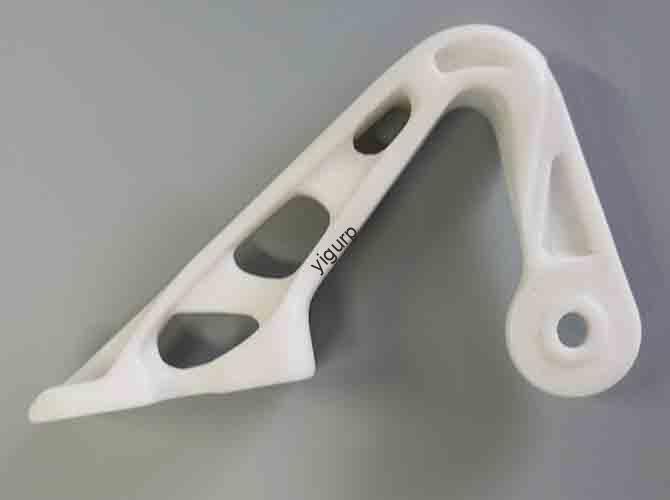In the era of smart manufacturing, 3D high-precision printing has redefined how industries create complex, Componenti di alta qualità. Unlike traditional subtractive methods that carve away material, this technology builds objects layer by layer—unlocking possibilities for intricate designs, produzione più veloce, and tailored solutions. This guide dives into its core principles, Vantaggi chiave, Applicazioni del mondo reale, and why it’s a critical tool for forward-thinking businesses.
1. Core Principles of 3D High-Precision Printing
Al suo cuore, 3D high-precision printing relies on a “layer-by-layer deposition” processo, driven by digital models (PER ESEMPIO., File CAD). This approach eliminates the limitations of traditional manufacturing, where complex shapes often require expensive molds or multiple machining steps. Below is a breakdown of how it works, plus a comparison to subtractive methods.
1.1 Flusso di lavoro passo-passo
- Digital Modeling: Create a detailed 3D model using software (PER ESEMPIO., Solidworks, Fusione 360). The model is sliced into thousands of thin 2D layers (typically 10–100 microns thick).
- Preparazione del materiale: Load specialized materials (plastica, metalli, ceramica) nella stampante 3D. Each material is optimized for precision—e.g., metal powders for aerospace parts, biocompatible resins for medical devices.
- Stampa di strato per strato: The printer deposits or cures one layer at a time. Per esempio:
- Powder-based systems (PER ESEMPIO., SLM) use lasers to fuse metal powder.
- Resin-based systems (PER ESEMPIO., Dlp) use light to harden photosensitive resin.
- Post-elaborazione: Rimuovere la parte, pulire il materiale in eccesso, and apply finishing steps (PER ESEMPIO., heat treatment for metals, polishing for plastics) to enhance strength and precision.
1.2 3D High-Precision Printing vs. Traditional Subtractive Manufacturing
| Caratteristica | 3D High-Precision Printing | Traditional Subtractive Manufacturing (PER ESEMPIO., MACCHING CNC) |
| Utilizzo del materiale | Rifiuti minimi (usa solo materiale necessario) | Sprechi elevati (carves away up to 70% di materia prima) |
| Complexity Support | Gestisce geometrie intricate (PER ESEMPIO., canali interni) | Struggles with complex shapes (richiede più configurazioni) |
| Tempi di consegna | Veloce (prototypes in hours/days) | Lento (molds/tooling take weeks/months) |
| Personalizzazione | Facile (adjust digital model only) | Difficile (requires new tooling for each design) |
2. Key Advantages of 3D High-Precision Printing
What makes this technology a game-changer? Its four core strengths address critical pain points for industries like aerospace, Assistenza sanitaria, and automotive—from reducing costs to enabling innovation.
2.1 Ripartizione dei vantaggi (con dati)
| Vantaggio | Dettagli & Impatto del mondo reale |
| Micron-Level Accuracy | Achieves precision as low as 5–10 microns (0.005–0.01 mm)—critical for medical implants and aerospace components. Per esempio, dental crowns printed with this precision fit patients’ teeth perfectly. |
| Libertà di design senza pari | No shape restrictions: Print parts with internal lattices, Strutture vuote, or organic curves. This has enabled lighter aerospace parts (reducing fuel costs by 15–20%) and personalized medical devices. |
| Diverse Material Support | Works with over 100+ Materiali, tra cui: – Metalli: Titanio (per gli impianti), alluminio (per aerospaziale). – Plastica: Addominali (per parti automobilistiche), Resine biocompatibili (Per strumenti chirurgici). – Ceramica: Zirconia (for dental crowns), Alumina (for industrial sensors). |
| Shortened Production Cycles | Cuts lead times by 50–80% compared to traditional methods. Per esempio, automotive prototypes that once took 6 weeks to make can now be printed in 2–3 days—accelerating R&D. |
3. Real-World Applications of 3D High-Precision Printing
This technology isn’t just innovative—it’s practical. Di seguito sono riportati i suoi casi d'uso di maggior impatto, with industry-specific examples.
3.1 Industria aerospaziale
- Componenti leggeri: Prints titanium or aluminum parts (PER ESEMPIO., staffe del motore, ugelli di carburante) that are 30–50% lighter than traditional parts. Questo riduce il peso dell'aeromobile, lowering fuel consumption by 10–15%.
- Complex Engine Parts: Creates turbine blades with internal cooling channels—impossible with CNC machining. These blades improve engine efficiency by 20%.
3.2 Healthcare Industry
- Custom Medical Devices: Produces personalized prostheses (PER ESEMPIO., artificial hips) and orthopedic stents. Using patient scans, parts fit perfectly—reducing post-surgery complications by 40%.
- Strumenti chirurgici: Prints high-precision tools (PER ESEMPIO., biopsy forceps) with 10-micron accuracy. These tools are more durable than plastic alternatives and cost 30% meno da produrre.
3.3 Industria automobilistica
- Prototipazione rapida: Tests new designs (PER ESEMPIO., Componenti della dashboard, maniglie delle porte) in giorni anziché settimane. This speeds up new car launches by 3–6 months.
- Customized Parts: Makes limited-edition parts (PER ESEMPIO., racing spoilers) for high-end vehicles. No tooling is needed—saving manufacturers $50,000+ per disegno.
Yigu Technology’s Perspective on 3D High-Precision Printing
Alla tecnologia Yigu, vediamo 3D high-precision printing as a catalyst for industrial transformation. Its ability to balance accuracy, velocità, and material diversity helps our clients solve unique challenges—from creating lightweight aerospace parts to personalized medical devices. We’ve integrated this technology into our solutions to cut client lead times by 60% and reduce material waste by 50%. Con l'avanzare dei materiali e delle stampanti, we expect it to become the standard for high-value manufacturing—especially in sectors where precision and customization are non-negotiable.
Domande frequenti: Common Questions About 3D High-Precision Printing
- Q: Is 3D high-precision printing only for small parts?
UN: NO. While it excels at small, parti dettagliate, industrial printers can produce large components (PER ESEMPIO., 1m x 1m aerospace panels) with the same precision. The key is choosing the right printer and material.
- Q: Are 3D-printed high-precision parts as strong as traditionally made parts?
UN: Yes—often stronger. Per esempio, metal parts printed via SLM have a 99.9% densità (same as forged metal) and can withstand high temperatures. Post-elaborazione (PER ESEMPIO., Trattamento termico) further boosts strength.
- Q: How much does a 3D high-precision printer cost?
UN: Prices vary by size and capability: – Desktop models (for small plastics): \(5,000- )50,000. – Industrial metal printers (per aerospaziale/medico): \(200,000- )2 milione. The cost is offset by lower material waste and faster lead times.
